AHS
1/217
There's no tags or description
Looks like no tags are added yet.
Name | Mastery | Learn | Test | Matching | Spaced |
|---|
No study sessions yet.
218 Terms

What painting is this?
Vittore Carpaccio, Saint Augustine in His Study, Tempera on panel, Venice, 1502 - 8
How does Carpaccio indicate there is a bright light?
Windows in the back have different shadows than the one St. Augustine
Who did Vittorio Carpaccio paint pictures of?
Saint Augustine and Saint George

What is Saint George doing in Carpaccio’s painting of him?
Fighting an allegory of a demon on a horse, with the Virgin Mary behind him
What is the Scuola di San Giorgio?
A confraternity, a place of religious worship
Where and when was Carpaccio’s painting of St. Augustine’s study created?
Venice, early 16th century
Which object do we see in Carpaccio’s painting of St. Augustine’s study?
Book, Astrolabe, Statue

Who can you see in this picture? “Madonna del Cardellino” (Madonna of the Goldfinch) by Raphael
Not the Virgin Mary, artists wife and kids, or Venus with Cupid and an angel
Which statement is correct?
The painting is not a realistic depiction of its object. This is because it reflects the artists schema—an established and mental and artistic formula—rather than correction
the horses legs are fully extended, as they would be traditionally imagined in motion, not as they truly are. The legs are inaccurate.
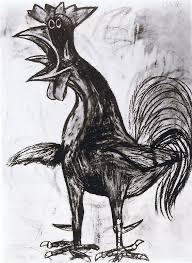
Who drew this picture?
Picasso
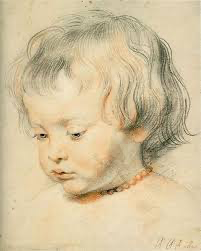
Whose son is this?
Rubens’s
Gombrich: “There really is no such things as Art. There are only _________”
Artists
Chronological order from Youngest to Oldest
Ernst Gombrich
Pablo Picasso
Vittorio Carpaccio
St. Augustine
What difference in animals is there in the study of St. Augustine in His Study?
Instead of a white pomeranian looking dog, its now a ferret.
What did Augustine say to Saint Jerome in Bethlehem in his letter?
“suddenly an indescribable light, not seen in our times…entered the cell where I [Augstine] was” That was Jerome entering eternal bliss
Synesthesia
‘togetherness/mixture of different senses’
Neuropyschological or aesthetic trait in which the stimulation of one sense causes the automatic experience of another sense.
Chapters 2 and 3 of Gombrich’s “The Story of Art” cover…
Ancient Egyptian and Ancient Greek Art
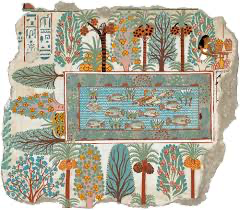
This object is…
Nebamoun’s Garden, painting from the tomb of Nebamoun, 1350 BCE — Egyptian — a painting of the lake not meant to be seen by us, it was meant for the person in the afterlife
Chronological older, beginning from the Oldest to Youngest
Cave paintings
pyramids
picasso
Gombrich
What is a quotation NOT from Gombrich’s text?
“Read the book as much as you can”
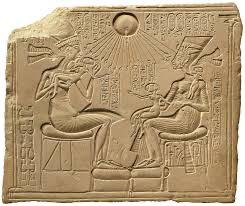
Who is the Pharaoh?
The adult person to your left.
According to Gombrich, when or where did the “greatest and most astonishing revolution of the whole history of art” take place?
In ancient Greece
Among other things, what was that “greatest and most astonishing revolution” about?
The depiction of the human soul
Which of the following techniques was discovered by Greek artists?
Foreshortening
The famous Parthenon (on top of the Acropolis) was built as …
A temple
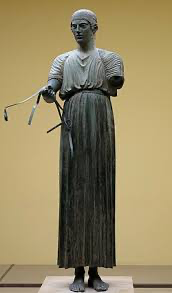
This statue depicts who or what?
A charioteer, Bronze
Who defined Art’s purpose of lacking a practical purpose as “purposivness without purpose”?
Kant
What did we say all art resembles?
A language
Who coined the term “readymade”?
Marcel Duchamp, in the early 20th century
Art is
based on sensory perception and is thus real
man-made (anthropogenic); ‘arti-fact’; a creation of sorts
a product of a skill or set of skills (lat. ‘ars’)
about form (or style); information that Art contains is ordered, or encoded, in a certain way
insofar reminsicent of a language
nevertheless, historically and culturally variable!
Language
A structured system used by humans that allow the creation, collection, recording, storage, processing, distribution, and use of information
Art is NOT
just about any product of human ingenuity (i.e. “This is not a Pipe”)
limited to what’s beautiful or pleasant
identical with what it depicts or represents (its subject or content)
What is important about René Magritte’s Ceci n’est pas une pipe (This is not a pipe)
It shows that Art is NOT just a recreation/product of human ingenuity, or its subject. The pipe cannot be used, touched, or smoked, so it is NOT a pipe. It is as if the art is screaming, “do not reduce me to my subject! i am more than that!”
What is happening in Zeuxis (5th century BC) and the Birds?
The painting of the grapes are so realistic, that the birds are flying towards them
Art is not always subjective. For something to be considered art….
shift your aspect (pov, context)
What does Kant mean by “purposivenss without purpose”?
in Art, function follows form — Art should express the feelings of its maker
Spectator’s (Subsidiary) Awareness (SSA)
The realization, conscious or not, that art resembles life and yet is also different from it.
Without it, representations of the world would appear either indifferent to the world itself or unlike the world at all.
To possess SSA is to see and, at the same time, to know what one is seeing.
Chronotope (“time-space”)
A configuration (a relative arrangement of parts or elements) of time and space, so that either one can be discerned by also looking at the other.
Gombrich: “There really is no such thing as ____”
Art
Gombrich: “What I wanted to say by that was, of coures, that the word ‘Art’ ______”
“meant different things at different times.”
Gombrich: “There is no harm in calling all these activities art as long as we ______”
“keep in mind that such a word may mean very different things in different times and places […]” (Chronotope)
Comparison (e.g. comparative study of Art)
The act of evaluating two or more things by determing the relevant, i.e. comparable characteristics of each thing, and then determining which characteristics of each are similar to the other, which are different, and to what degree.
What is important about “Fountain” Marcel Duchamp, 1917, photograph by Alfred Stieglitz?
Its an example of a ReadyMade — man made object
Readymade
Term coined by Marcel Duchamp in the early 20th century to describe a found object selected by the artist and displayed in an art context.
NOT to admire and preserve, but rather to investigate its origins
Another example of a Readymade?
Pablo Picasso, Bull’s Head, 1942, metal and leather
Art is Autofunctional, meaning…
The functionality, purpose, and application of art (1) differ from the functionality, purpose, and application of other human activities, and (2) tend to be determined by art itself
Art is Selfreferential, meaning…
Unlike most human activities, art tends to refer not only to the world, but also to (art) itself (“art comes from art”)
Art is Symbolic, meaning…
The meaning of a work of art is different from, though based on, what qualifies as its subject
Geofact
“Venus of Berekhat Ram,” pebble found at Berekhat Ram/Golan Heights, c. 250,000 BP
Gombrich: “For most of the paintings and the statues which are now lined up along the walls of our museum and galleries were _______”
“not meant to be displayed as Art. They were made for a definite occasion and a definite purpose which were in the artist’s mind when he set to work.”
Which of the following is NOT an Ancient Greek architectural style?
Athenian
What are some Ancient Greek architectural styles?
Doric
ionic
Corinthian
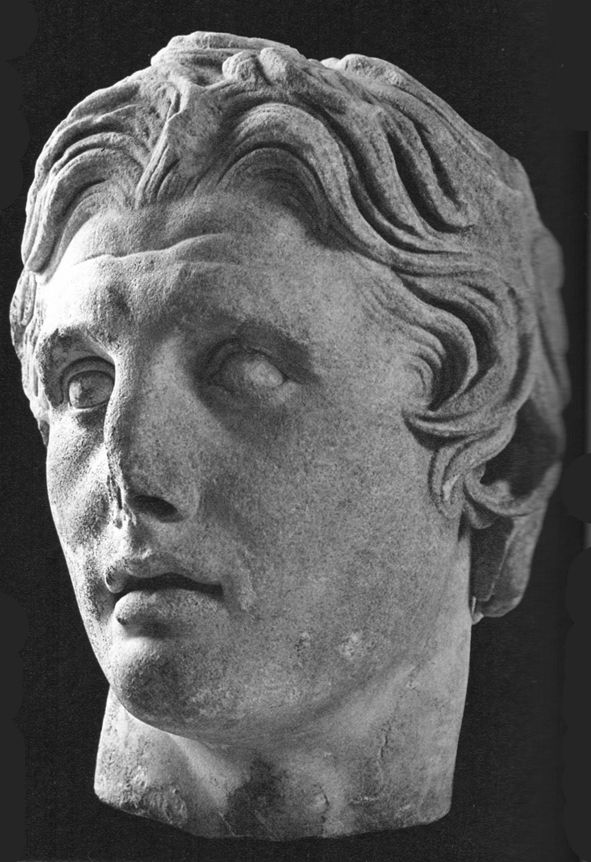
What’s his face?
Alexander the Great
The most distinctive feature of Roman architecture was the use of …
Round arches

Trajan’s column shows what?
War stories — its a historical context
Ancient Christian and Jewish beliefs…
forbade the making of images
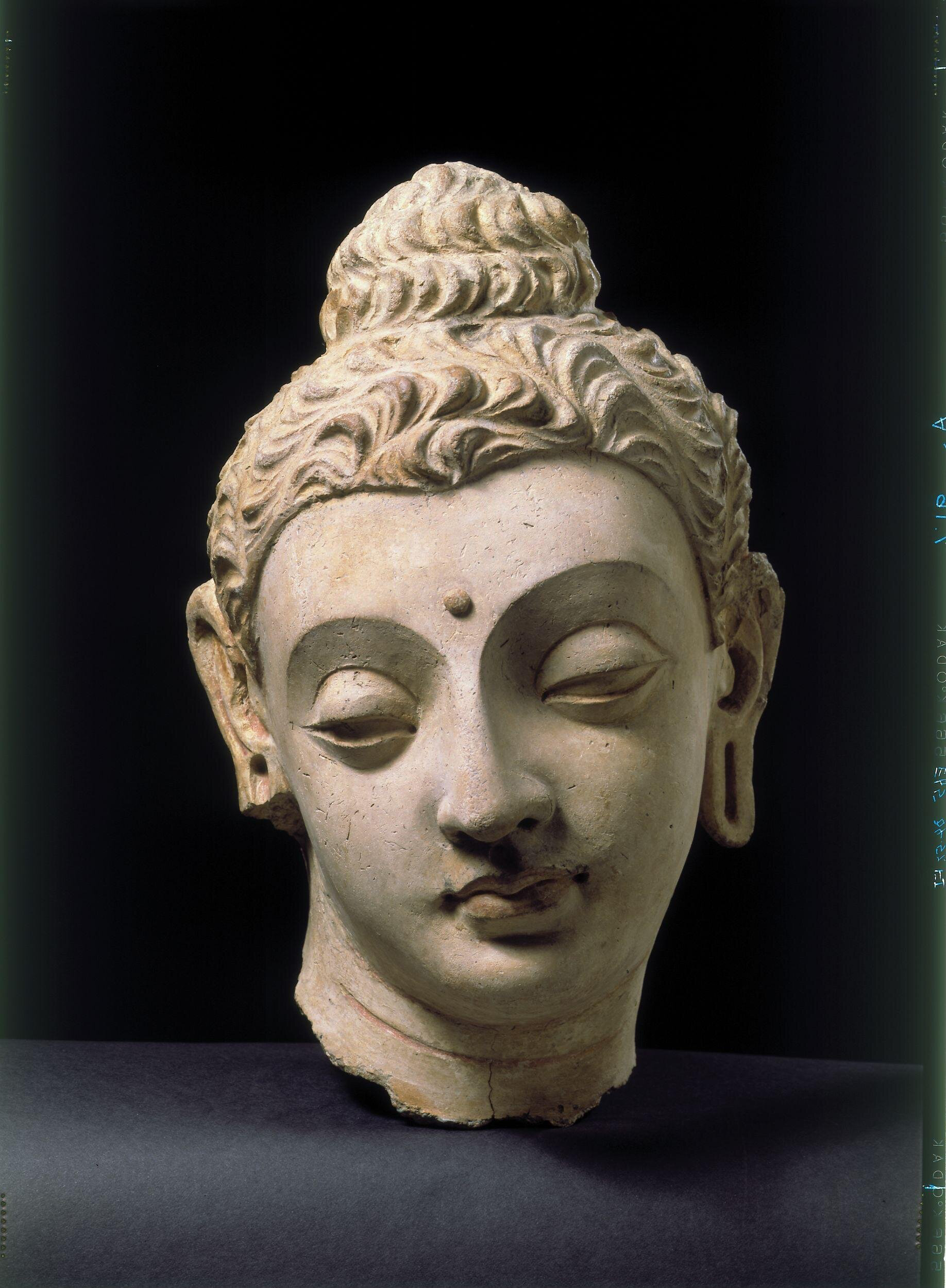
This image represents?
Buddha
Wall painting technique first used by ancient Mediterranean artists, in which water-based pigments are applied to wet lime plaster, is called…
fresco (fresh)
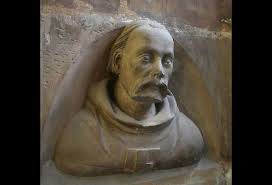
Who is this person?
An artist, and the Architect of the St. Vitus Cathedral
When did the “birth of the Artist” happen?
since the Renaissance, 1300/1400s
Which of the following statements about art is NOT correct?
All art is beautiful (All art is autofunctional, symbolic, and selfrefrential, but not beautiful)
What were artists at the Ottoman Court of Mehmet II in the mid 15th century called?
Nakkas
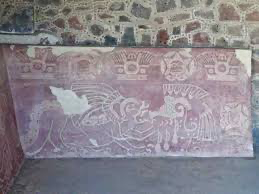
Who is blowing the conch shell?
Jaguar
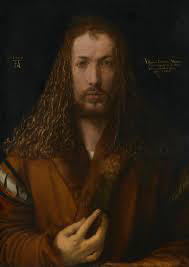
Who painted this?
Albrecht Dürer
World Art
Refers to the idea of expanding the term and concept of Art either TOPOGRAPHICALLY, or CHRONOLOGICALLY, or both, from Western art to Non-Western Art and to times before the Italian Renaissance.
World Art HISTORY assumes
that artworks from different times and places are neither the same (universalism) nor so different from each other that they cannot be compared at all (relativism)
Peter Parler
German architect and sculptor, Self-Portrait, St. Vitus Cathedral, circa 1370-1379, Prague
Giorgio Vasari
Italian painter, architect, and writer — Frontispiece from The Lives of the Most Excellent Painters, Sculptors, and Architects, Florence 1550
Nothing has existed forever, thats why we call it
culture
What is the significance of Peter Parler’s self portrait in the St. Vitus Cathedral?
it is the oldest first known portrait
What is the significance of Giorgio Vasari’s book, The Lives of the Most Excellent Painters, Sculptors, and Architects?
Artists began being recognized after the renaissance as privileged makers of art, and no longer remained anonymous
What is so important about Albrecht Dürer’s “Self-Portrait in a Fur-Collared Robe”? 1500
Artists never really made Self portraits, he watermarked it with his signature, he represented social status with the fur collar and compared himself to Christ
What mosaic is similar to Albrecht Dürer’s “Self Portrait”?
Christ the Merciful, early 12th century, mosaic, Unknown Byzantine artist
Birth of the ARTIST (since the Renaissance, 1300/1400s)
separation of the artist and craftsman/artisan
profession of its own
increase in social standing and reputation
artists lose their “anonymity”
history of art comes to be seen as a history of artists
art is increasingly seen in light of its maker
origins of the idea that art is an expression of its author’s intentions, thoughts, and feelings
theories of Art emerge (aesthetic discourse)
What is so significant about Diego Velazquez’s painting, Las Meninas? 1656
It was meant to be a painting of the Spanish Royal court, but he painted himself in it painting what was meant to be the subjects, making himself a subject
Nakkas
Ottoman (Turkish) artists at the court of Sultan Mehmet II
They did not sign or date any of their work, or left any self-portraits, but conceived themselves as “Artists” due to Western influence
Ex. “Portrait of a Painter” painting the Sultan, Unknown Ottoman Artist
What is an “arabesque”?
Ornament
Who suggested that for illiterate audiences pictures could be what the scripture was to the literate?
Pope Gregory
What was the original purpose of ancient Chinese landscape pictures?
Meditation
What is iconoclasm and where did it occur?
The persecution and destruction of images in Byzantium and Islamic art
Which of the following is NOT a printmaking technique?
Drawing
What are some printmaking techniques?
Woodcut
Etching
Lithography
Which is considered “relief” printing?
Woodcut
When and where was oil painting invented?
Italian Renaissance
What type of paint is made of ground colors mixed with egg yolk as a binding medium?
tempera
Who is usually granted with discovering linear perspective? And when?
Brunelleschi, 15th Century
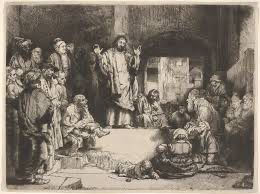
Which printing technique was used?
Etching
What is the painting Female figures with attendants (“The Women of Sigiriya”) 5th century, made of?
Fresco, pigments on stone
Gombrich: “It is not their standard of craftsmanship which is different from ours, but their ideas, It is important to realize this from the outset, because the whole story of art is ______”
“not a story of progress in technical proficiency, but a story of changing ideas and requirements.” (43)
The Arnolfini Portrait
Jan van Eyck (Netherlandish painter) 1434, oil (his signature is also in the back, under the chandelier)
Oil Paint
Pigment (color particles) bound together with an oil medium. Oil paint has the advantage over tempera of being slow to dry and therefore reworkable. it can be applied with a brush or a palette knife, generally onto stretched canvas, though primed wooden panels were used in earlier periods. Its invention is usually credited to Jan van Eyck in the 15th century.
What is the medium of Masaccio (italian painter) The Virgin and Child (Pisa Altarpiece)? 1426
Tempera on wood
Printmaking Techniques
Process of making multiple artworks or impressions, usually on paper
Relief
Woodcut — printing from top of incision
Intaglio
Engraving, Etching (acid) — printing from bottom of incision
Planographic Printing
Lithography — printing from a single plane
Stencil
Silkscreen, Pochoir — printing through an opening
Woodcut
Printing technique in which the image to be printed is carved on wood in relief, the areas that are not to appear on the print being carved away. Ink is applied to what remains, and the block is pressed onto paper.
originated in China in the 5th century AD. Technique was used in Europe to print images on paper by the late 14th century.
What is an example of a woodcut?
Saint Michael Fighting the Dragon, woodcut, Albrecht Dürer 41 × 28 cm
Under the Wave off Kanagawa, polychrome woodcut, Katsushika Hokusai
Engraving
Technique of intaglio (recessed) printmaking in which an image or pattern is incised into a metal plate. Plate is covered w/ ink, fills incisions, surface is wiped, and the paper is pressed onto a plate and into the incisions, then transferring the inked design into a mirror image. Multiple copies can be made from the same plate.